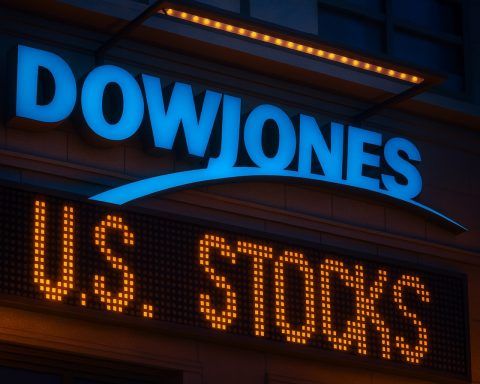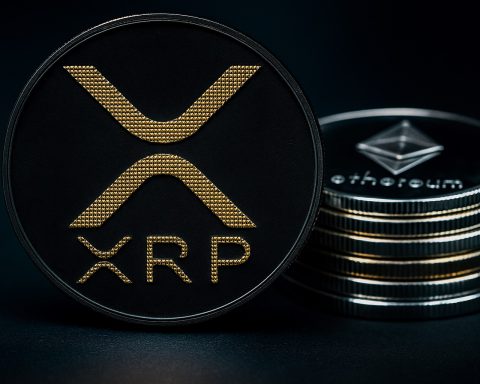Verizon Communications (NYSE: VZ) is trading slightly higher today after a dramatic 24 hours in which the new CEO confirmed the company’s largest-ever round of layoffs, a hefty severance charge, and a continued commitment to its high dividend. As of late-morning U.S. trading on November 21, 2025, Verizon stock is changing hands around $41.22, up a little over 1% on the day. [1]
At the same time, Wall Street and Main Street are digesting news that Verizon will eliminate more than 13,000 jobs, convert 179 company‑owned stores into franchises, and take a $1.6–$1.8 billion severance charge in Q4 2025, even as the company leans on solid cash flow and a dividend yield near 6.8% to keep shareholders onside. [2]
Key takeaways for Verizon (VZ) on November 21, 2025
- VZ stock is trading around $41, modestly higher today after slipping about 1% yesterday when the layoff plan hit the tape. [3]
- New CEO Dan Schulman is cutting 13,000+ roles, equal to roughly 20% of non‑union wage costs, plus converting 179 corporate retail stores into franchise locations.
- Verizon expects a Q4 severance charge of $1.6–$1.8 billion, with over 80% of affected employees leaving in December 2025, and is funding a $20 million career transition program. [4]
- Despite restructuring, Q3 2025 results showed wireless service revenue of $21.0 billion, EPS of $1.17 and 306,000 broadband net additions, supporting Verizon’s 19th consecutive dividend increase. [5]
- The stock trades at roughly 9× forward earnings, with an average 12‑month price target in the high‑$40s, implying mid‑teens upside plus a 6.7–6.8% dividend yield if forecasts are met. [6]
Verizon stock today: modest rebound after a rough Thursday
Intraday on November 21, Verizon shares are hovering near $41.22, up about 1.1% compared with Thursday’s close. That puts VZ toward the upper end of its recent low‑$40s trading band but still below its 200‑day moving average around $42.56. [7]
MarketBeat data shows a 12‑month trading range of roughly $37.58 (low) to $47.35 (high), a P/E ratio near 8.7, a PEG ratio around 3.0 and a beta of just 0.35, underscoring Verizon’s status as a lower‑volatility, income‑oriented stock rather than a high‑growth tech play. [8]
Today’s bounce looks less like a euphoric reaction and more like a relief move after investors sold the stock yesterday on headline shock around layoffs and restructuring charges.
13,000 job cuts: what exactly Verizon announced
The biggest story driving Verizon stock today is the company’s massive workforce reduction.
According to a filing and internal memo reported by Reuters and Investing.com, Verizon will: [9]
- Eliminate more than 13,000 jobs, its largest single layoff ever
- Take a $1.6–$1.8 billion severance charge in Q4 2025
- Have over 80% of affected employees exit in December 2025
- Convert 179 corporate‑owned retail stores into franchises and close one store
- Significantly reduce outsourced and other external labor
New CEO Dan Schulman told employees that Verizon’s “current cost structure limits our ability to invest significantly in our customer value proposition”, arguing that the company must simplify operations to remove “complexity and friction” that slow service and frustrate customers.
Verizon says the job cuts are not directly driven by AI, even though Schulman’s memo and the company’s PR emphasize that the industry is entering an “age of AI” and that displaced workers will be supported by a $20 million career transition and reskilling fund focused on helping them prepare for new technologies. [10]
Scale of the cuts:
- Verizon ended 2024 with about 100,000 U.S. employees, including roughly 70,000 non‑union workers.
- The new plan follows nearly 20,000 jobs already cut over the last three years and is equal to about 20% of non‑union wage costs, according to Reuters.
In short, this is a deep reset of Verizon’s cost base under its new leadership.
Competitive pressure is the backdrop to the restructuring
The layoffs don’t exist in a vacuum. Verizon’s move comes after a stretch in which it has lagged rivals on subscriber growth:
- In Q3 2025, Verizon added just 44,000 monthly postpaid wireless subscribers, well behind T‑Mobile, which added over 1 million net postpaid subs, and trailing AT&T as well.
- Wireless competition remains intense, with aggressive iPhone promotions and trade‑in deals from AT&T and T‑Mobile, and cable operators bundling mobile into broadband packages. [11]
At the same time, Verizon is still investing in its network and enterprise relationships:
- The company recently completed a 100G dedicated optical ring for Monumental Sports & Entertainment, forming the backbone of the Monumental Sports Network’s broadcast and content‑creation infrastructure and enabling more efficient remote production.
That type of capex‑hand‑in‑glove‑with‑cost‑cuts story is exactly what Schulman is trying to tell: trim the cost structure so more cash can be pointed at high‑value 5G, broadband and enterprise projects.
Under the surface: earnings, cash flow and that big dividend
For all the noise about layoffs, Verizon’s fundamentals are not falling apart—in fact, they’ve been improving.
In its Q3 2025 results, Verizon reported: [12]
- Wireless service revenue: $21.0 billion, up 2.1% year over year
- Total revenue: $33.8 billion, up about 1.5% YoY
- GAAP EPS: $1.17, versus $0.78 a year ago; adjusted EPS of $1.21
- Free cash flow (first nine months of 2025): $15.8 billion, vs. $14.5 billion in the same period of 2024
On the broadband side, the company delivered:
- 306,000 broadband net additions in Q3
- 261,000 fixed wireless access net adds
- 61,000 Fios internet net adds, its best Fios quarter in two years [13]
Management has guided for full‑year 2025 wireless service revenue growth of 2.0–2.8% and free cash flow between $19.5 and $20.5 billion, while keeping capex within or below a $17.5–$18.5 billion range. [14]
Dividend profile
For income‑focused investors, Verizon’s dividend is the other big headline:
- The quarterly dividend was raised to $0.69 per share, or $2.76 annually, marking the 19th consecutive year of dividend increases. [15]
- At today’s ~$41 share price, that’s a yield of roughly 6.7–6.8%. [16]
- MarketBeat estimates the payout ratio around 58–59% of earnings, suggesting room—though not unlimited room—for further hikes if earnings and cash flow keep growing. [17]
An analysis from 24/7 Wall St. this week highlighted Verizon as one of three “dividend stocks perfect for any portfolio,” pointing to its improving cash flow, 19‑year dividend growth streak and the potential benefit of lower interest rates on its sizeable ~$170 billion debt load. That article also notes that Verizon generated about $17.5 billion in net income despite a $6.3 billion net interest expense, underlining the strain but also the resilience of its cash engine. [18]
Institutional investors are actively repositioning in VZ
One of the most interesting storylines today is just how busy big money has been in Verizon.
A series of 13F‑based updates published on November 21 show both large buyers and large sellers among institutional holders: [19]
- Swiss National Bank increased its stake by 7.6%, adding 901,700 shares to reach about 12.77 million shares worth roughly $552.7 million. [20]
- Handelsbanken Fonder AB boosted holdings by 4.8% to 1.58 million shares, valued near $68.2 million. [21]
- Journey Strategic Wealth LLC lifted its position by about 49% to 34,444 shares, adding 11,321 shares in the quarter. [22]
On the other side of the ledger:
- Bank Julius Baer & Co. Ltd Zurich trimmed its stake by 9.4%, selling 46,071 shares and ending with 445,673 shares (~$21.0 million). [23]
- Willis Investment Counsel cut its holdings by 18.9%, offloading 130,995 shares and finishing with 562,678 shares (~$24.3 million), about 1.4% of its portfolio. [24]
- Earlier filings show Ensign Peak Advisors reducing its position by roughly 45.9% and Legal & General Group trimming by about 2.8%. [25]
Quiver Quantitative estimates that, across recent quarters, 1,528 institutional investors have added Verizon shares while 1,351 reduced positions, indicating a heavily owned but actively debated name. [26]
Net‑net, there’s no unanimous verdict from big money; instead, funds appear to be rotating around the restructuring and yield story, with some taking profits and others leaning into the new strategy.
Analyst sentiment: cautious but generally constructive
Wall Street’s view of Verizon is cautious‑optimistic, not euphoric.
MarketBeat currently shows: [27]
- A consensus rating around “Hold”, with a 12‑month average target price near $47–$48
- Several recent target changes, including:
- RBC Capital trimming its target from $46 to $44 (Hold)
- TD Cowen cutting from $56 to $51 but keeping a Strong Buy
- Scotiabank maintaining around $51 with a “sector perform” view
StockAnalysis, which aggregates a slightly different analyst set, lists 12 analysts covering the stock with an average target of $48.5 and a consensus rating of “Buy,” implying about 17–18% upside from today’s price if those targets are met. [28]
Forecasts compiled there suggest: [29]
- 2025 revenue of roughly $142.1 billion, up about 5.4% year over year
- 2025 EPS around $4.83, rising to $4.97 in 2026
- Research from Zacks recently nudged up longer‑term EPS estimates, lifting a Q3 2027 EPS forecast from $1.32 to $1.33 and a full‑year 2027 EPS estimate to about $5.13, above current consensus around $4.69.
The takeaway: analysts generally see Verizon as undervalued but not risk‑free, with much riding on Schulman’s ability to translate job cuts and store conversions into sustainable margin and cash‑flow gains.
How the restructuring could affect Verizon’s long‑term story
From an investor’s perspective, the 13,000‑job cut is fundamentally a margin and capital‑allocation move:
Potential positives
- Lower operating expenses: Reducing 20% of non‑union wage costs plus outsourced labor should, over time, expand margins and boost free cash flow—cash that can support the dividend, pay down debt, or fund 5G and fiber growth. [30]
- Lean retail footprint: Converting 179 stores into franchise locations reduces fixed costs and shifts more risk to local operators, while keeping Verizon branding and customer reach. [31]
- Reinvestment in network and enterprise deals: Projects like the Monumental Sports 100G optical ring highlight how Verizon can use its balance sheet and engineering capabilities to lock in sticky, high‑value enterprise relationships.
- Dividend as an anchor: A near‑7% yield, with a long history of increases and a sub‑60% payout ratio, can attract income investors who are willing to ride out some volatility. [32]
Key risks
- Execution and morale risk: Cutting 13,000 roles—on top of earlier reductions—risks damaging morale and service quality just as Verizon says it wants a “customer‑first culture.” Employee forums and tech‑press coverage already show frustration and calls for labor action, including coordinated “sick‑outs” around Black Friday. [33]
- Top‑line growth pressure: Verizon is playing offense with cost cuts, but defense on growth: Q3 postpaid phone net adds were modest, and competition from AT&T, T‑Mobile and cable MVNOs remains fierce. [34]
- Interest‑rate and debt overhang: While rates may be easing, Verizon still carries a large debt stack—roughly $100+ billion in unsecured debt—with billions in annual interest expense. That leaves less room for error if revenue growth underwhelms or if the restructuring doesn’t deliver the promised savings. [35]
- Regulatory and reputational risk: Large layoffs at a household‑name telecom during a period of broader tech and media downsizing can draw political and media scrutiny, particularly because Verizon emphasizes AI‑era reskilling while insisting the cuts aren’t caused by AI.
Is Verizon stock a buy after today’s news?
For short‑term traders, VZ’s move today looks like a classic “sell the news, buy the dip” setup: the worst of the layoff shock is out, and the stock is still trading at a single‑digit earnings multiple with a high, currently covered yield.
For long‑term investors, the decision is more nuanced:
- Bullish angle: If Schulman executes, Verizon could emerge as a leaner, more focused cash‑flow machine, where cost savings help fund network upgrades and debt reduction while preserving the dividend—supporting the case for mid‑teens total annual returns combining yield plus moderate price appreciation. [36]
- Bearish angle: If cost cuts undermine service quality, employee engagement or brand perception, Verizon risks losing more ground to AT&T and T‑Mobile, forcing even heavier handset promos and discounting, which could offset much of the planned savings. [37]
Either way, today’s news makes one thing clear: Verizon is no longer a sleepy, set‑and‑forget utility‑like stock. Under a new CEO, it’s in the middle of a high‑stakes reset that will likely define VZ’s returns for the next several years.
This article is for informational and educational purposes only and does not constitute financial or investment advice. Always do your own research or consult a licensed financial adviser before making investment decisions.
References
1. stockanalysis.com, 2. m.in.investing.com, 3. www.kptv.com, 4. m.in.investing.com, 5. www.quiverquant.com, 6. www.marketbeat.com, 7. stockanalysis.com, 8. www.marketbeat.com, 9. m.in.investing.com, 10. www.kptv.com, 11. www.morningstar.com, 12. www.quiverquant.com, 13. www.quiverquant.com, 14. www.quiverquant.com, 15. www.quiverquant.com, 16. www.marketbeat.com, 17. www.marketbeat.com, 18. 247wallst.com, 19. www.marketbeat.com, 20. www.marketbeat.com, 21. www.marketbeat.com, 22. www.marketbeat.com, 23. www.marketbeat.com, 24. www.marketbeat.com, 25. www.marketbeat.com, 26. www.quiverquant.com, 27. www.marketbeat.com, 28. stockanalysis.com, 29. stockanalysis.com, 30. m.in.investing.com, 31. m.economictimes.com, 32. www.marketbeat.com, 33. www.phonearena.com, 34. www.morningstar.com, 35. www.quiverquant.com, 36. www.quiverquant.com, 37. www.morningstar.com







